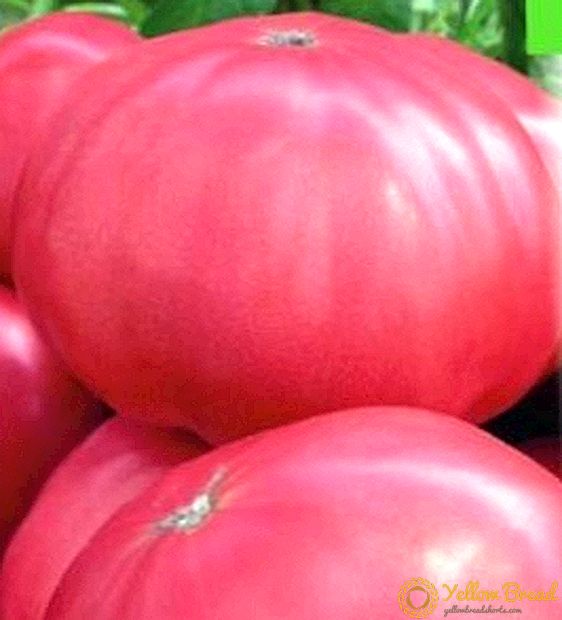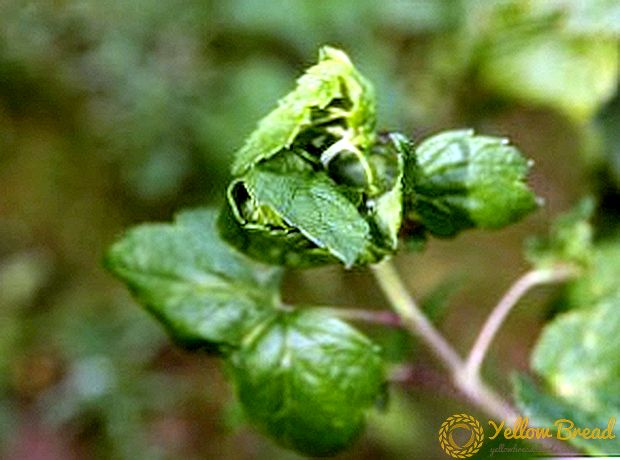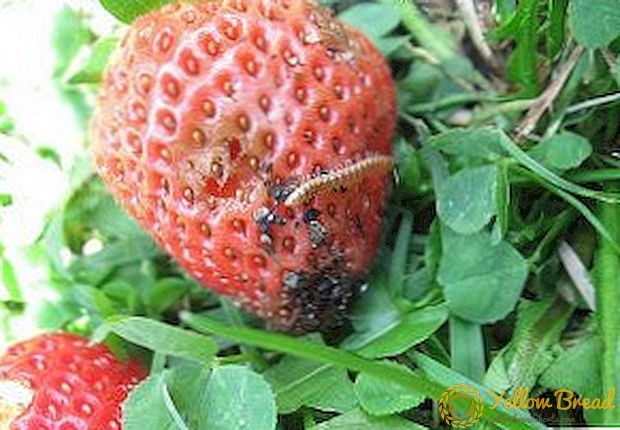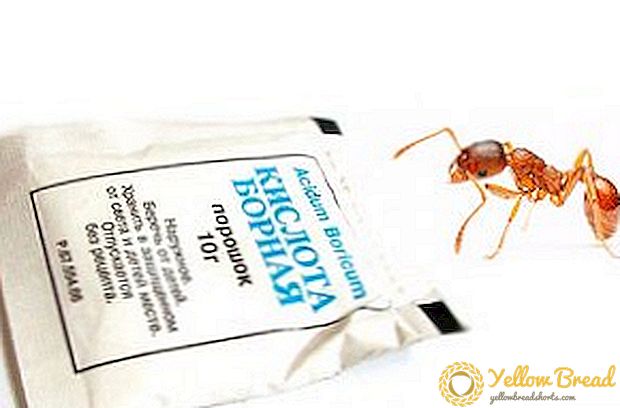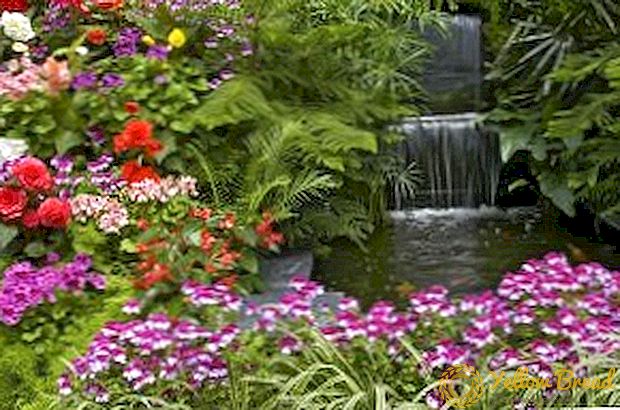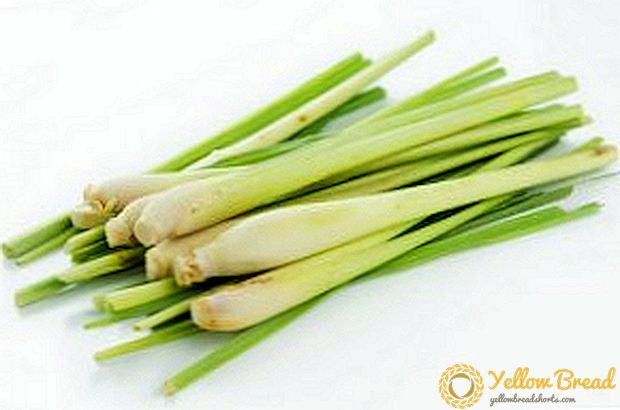 Citronella or lemongrass is an exotic plant that appeared relatively recently in our country, but has already gained great popularity among gardeners and herbalists. In this article we will take a closer look at citronella, or rather, what it is, how to grow lemongrass at home, how to care for it and how it is useful.
Citronella or lemongrass is an exotic plant that appeared relatively recently in our country, but has already gained great popularity among gardeners and herbalists. In this article we will take a closer look at citronella, or rather, what it is, how to grow lemongrass at home, how to care for it and how it is useful.
- Description
- The necessary conditions
- Humidity and temperature
- Lighting
- The soil
- How to grow citronella seedlings
- Seed preparation
- Sowing
- Transplanting
- Lemongrass Care Rules
- Little about the beneficial properties of the plant
Description
Lemongrass or citronella (also called "lemon grass", "chelnobrodnik", "lemon sorghum", "cymbopogon") - is a grassy perennial from the tropics, belongs to the family of cereals.
There are about 60 species of this plant in the world, most of which grow in tropical and subtropical parts of Africa, America and Asia.
All types of lemongrass grow very quickly, can reach a height of one and a half meters. The root system is fibrous, very quickly depletes the soil around it.
The shoots are cylindrical.The leaves of citronella are harsh to the touch, light green in color, surround the stem and emit a tangible citrus scent, thanks to which the plant got its name.
Lemon grass is widely used in cosmetology, cooking, traditional medicine. 
The necessary conditions
As we already know, lemongrass is a tropical plant that is demanding for heat and moisture, therefore, before trying to grow it at home, it is necessary to familiarize yourself with certain conditions for favorable growth.
Humidity and temperature
Since citronella is a tropical plant, it is very demanding on moisture, so it needs high-quality watering. Watering should be moderate, but regularly, as the drying out of the soil can lead to a quick death of the plant.  Usually, lemongrass is watered every day, but little by little, and if it is planted in open ground, they do not allow water to stagnate. On hot days, regardless of whether lemon grass is growing outside or indoors, it should be watered twice a day.
Usually, lemongrass is watered every day, but little by little, and if it is planted in open ground, they do not allow water to stagnate. On hot days, regardless of whether lemon grass is growing outside or indoors, it should be watered twice a day.
In winter, watering is reduced, but the land should not be allowed to dry out.The plant is very fond of humid air, so it is advisable to spray the leaves with warm water, especially this procedure will be useful in drought and in winter, as the heaters dry the air very much.
Lemongrass is very sensitive to external temperatures. The values within which it will develop normally correspond to + 20 ° С ... + 25 ° С.
A lower temperature leads to the fact that physiological, biochemical processes and photosynthesis are slowed down. In winter, temperature fluctuations, especially when combined with a lack of light, also negatively affect the lemongrass.  This leads to a strong depletion of the plant, and then to the drying and death of the leaves. New leaves will be much inferior to the old in size.
This leads to a strong depletion of the plant, and then to the drying and death of the leaves. New leaves will be much inferior to the old in size.
Lighting
Lemongrass is a very light-loving plant. Therefore, if you decide to plant it in open ground, then the area should have a lot of light, and when grown in indoor conditions, it is best to put the pot on the south or southeast windows.
In winter, extra lighting is very important for lemongrass. Therefore, above the plant does not hurt to install a fluorescent lamp with a capacity of about 20 watts or phytolamp. 
The soil
Soil for sorghum, it is better to take light and fertile, with plenty of sand. For greater fertility and moisture retention, it is recommended to add humus and perlite to the substrate.
But you can also buy ready-made mixture for succulents. In its natural habitat, this plant is found near marshlands, therefore, it is often planted in open ground near the coastal zone of water bodies, while only sand and humus for fertilizer are added to the soil.
Growing a plant in a pot, it is very important to take care of good drainage, for which purpose it is best to pour a ten-centimeter layer of pebbles, rubble or broken bricks on the bottom of the pot. Strongly small drainage is not recommended.

How to grow citronella seedlings
Lemon grass is propagated in three ways: through cuttings, onions and seeds. The most popular and convenient method of propagation of citronella is growing from seeds, and material that is not more than two years old is best for sowing.
Seed preparation
Lemongrass seeds can be purchased at a flower shop, but some people buy them from spice sellers. Before proceeding to the landing of the purchased material, it must be properly prepared for this process.
So, the seeds should be wrapped in a damp cloth or gauze, then placed in a plastic bag or in a small, closed glass jar and left in a warm place for 10 to 12 hours.
After soaking, they must be dried. To do this, the seed is placed between two paper sheets, or simply wrapped in toilet paper or paper towels so that they absorb moisture faster. 
Sowing
After a short preparation of seeds, it is advisable to immediately proceed to sowing.Experienced gardeners, I recommend to plant each seed in a separate peat, but a simple pot will do.
Seed material should be planted to a depth of 5 mm to 10 mm, lightly powdered with earth. After that you should carefully water the seedlings, making sure that the seed is not washed out of the soil.  Seedlings need high humidity, so the pots must be placed in a regular plastic bag and placed in a warm room with a temperature not lower than +22 ° C, or carried to a micro-greenhouse, if any.
Seedlings need high humidity, so the pots must be placed in a regular plastic bag and placed in a warm room with a temperature not lower than +22 ° C, or carried to a micro-greenhouse, if any.  After that, the seeds will have to germinate in less than a week. The best time for sowing is considered to be the beginning of March, but if you want to get a houseplant, you can sow later.
After that, the seeds will have to germinate in less than a week. The best time for sowing is considered to be the beginning of March, but if you want to get a houseplant, you can sow later. 
Transplanting
If you grow lemon grass in a room, as it grows, you will have to replant the plant in larger pots. If you decide to plant in open ground, citronella must be tempered.
To do this, in warm weather, it is carried out to the balcony for a couple of hours, be sure to loosen the saplings from the direct sun, the same procedure will not damage the saplings intended for indoor maintenance.
It is better to sow young plants outside in the end of May or in June, when steady warm weather sets in.
Lemon grass, which you are going to use for culinary or medical purposes, is best planted in a greenhouse or under a wrap, in which case full-grown stems will appear much faster.
Lemongrass Care Rules
Lemongrass often grows exclusively in the same place and does not extend outside the garden. With enough light and moisture, the plant develops well even in very dry and sultry weather.
To maintain the moisture of the substrate, the soil should be mulched with a layer of about 15 cm. Sawdust, dry manure, straw, peat, leaves, etc. can be used as mulch material.
In the summer, several times a month, you can apply fertilizer from manure, or combined fertilizer for cereals. From the end of the summer to February it is not necessary to carry out top dressing.
At the end of the summer, lemongrass is transplanted from the soil into the pot and transferred to the room. In this case, the plant can remain in the same state and preserve all the green leaves, but it may be that the aerial part completely dries and will fall.  But do not rush to throw away the plant - this is a kind of acclimatization.In this case, in the pot you need to constantly keep the ground moist (throughout the winter), and in the spring, new stems and leaves will appear.
But do not rush to throw away the plant - this is a kind of acclimatization.In this case, in the pot you need to constantly keep the ground moist (throughout the winter), and in the spring, new stems and leaves will appear.
Trimming is carried out only in the case of procurement of raw materials, in other cases it is not needed.
Little about the beneficial properties of the plant
The composition of lemongrass includes a large number of nutrients and vitamins, which makes this plant very useful. Preparations with its content have antioxidant, bactericidal, fungicidal, astringent, insecticidal, regenerating properties.
It is also taken as a sedative, used as a drug in the treatment of fungal diseases of the skin and nails, scabies.
Lemongrass improves lymph flow, strengthens blood vessels, increases muscle endurance, and improves lactation in nursing mothers. At the heart of many drugs for the treatment of sinusitis, frontitis, sinusitis, varicose veins, lies extract from the stalk of lemon grass.

If you follow the rules of growing and caring for this wonderful plant, it will delight you with its lush look, and for some it will be a good addition to the “natural” first-aid kit.

